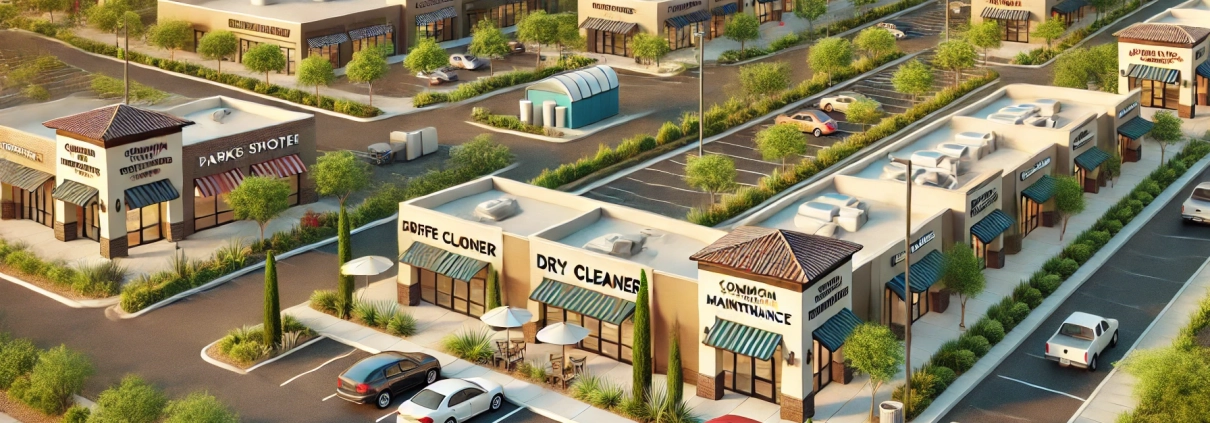Common Area Maintenance (CAM)
Common Area Maintenance, commonly referred to as CAM, is a term used in commercial real estate leases that is meant to address the cost of building operations that all tenants benefit from and will pay for. Tenants usually pay a portion of CAM as determined by the negotiated agreement, but often times it is the tenant’s pro rata share. What’s included in CAM costs varies, but common CAM items may include janitorial services, landscaping, common area electricity, security, trash removal, and snow removal.
Putting ‘Common Area Maintenance’ in Context
Scenario Overview:
Desert Ridge Retail Partners, a real estate investment firm specializing in core-plus acquisitions, recently acquired Catalina Crossing Strip Center, a 45,000 square foot convenience (unanchored) retail strip center located in a growing suburban area of Tucson, Arizona. Catalina Crossing is home to 10 tenants, including a popular local coffee shop, a dry cleaner, a nail salon, a small gym, and several other service-oriented businesses.
CAM in Practice:
As the new owners, Desert Ridge Retail Partners is responsible for managing and maintaining the common areas of Catalina Crossing. These areas include the parking lot, landscaped walkways, lighting, and the shared waste disposal area. Since the strip center’s tenants all benefit from these common areas, they are required to contribute to the costs associated with their upkeep.
The lease agreements for each tenant at Catalina Crossing specify that they must pay their pro rata share of the Common Area Maintenance (CAM) expenses. The pro rata share is typically calculated based on the square footage each tenant occupies relative to the total leasable square footage of the strip center.
Example Calculation:
Let’s assume the total annual CAM expenses for Catalina Crossing amount to $90,000. These expenses cover landscaping services, parking lot maintenance, exterior lighting, security, trash removal, and other common area-related costs.
One of the tenants, the local coffee shop, occupies 4,500 square feet of the strip center. To calculate the coffee shop’s CAM obligation:
- Pro Rata Share Calculation:
Pro Rata Share = (Tenant's Leased Square Footage) / (Total Leasable Square Footage) = 4,500 SF / 45,000 SF = 0.10 or 10% - Annual CAM Payment:
Annual CAM Payment = Pro Rata Share × Total CAM Expenses = 0.10 × $90,000 = $9,000
In this case, the coffee shop would be responsible for $9,000 annually, or $750 per month, in CAM charges.
Impact on Tenants and Operations:
Understanding CAM is crucial for both the tenants and the property owners. For tenants, it’s an important part of their overall occupancy cost, and it’s essential for budgeting. For Desert Ridge Retail Partners, accurately estimating and managing CAM costs is vital to maintaining profitability and ensuring tenant satisfaction. Properly managed CAM charges allow the property to operate smoothly, ensuring that the common areas remain in good condition, which in turn helps attract and retain tenants.
This hypothetical example illustrates how CAM is calculated and applied in a real-world retail strip center context, highlighting its importance in commercial real estate operations.
Click here to get this CRE Glossary in an eBook (PDF) format.

